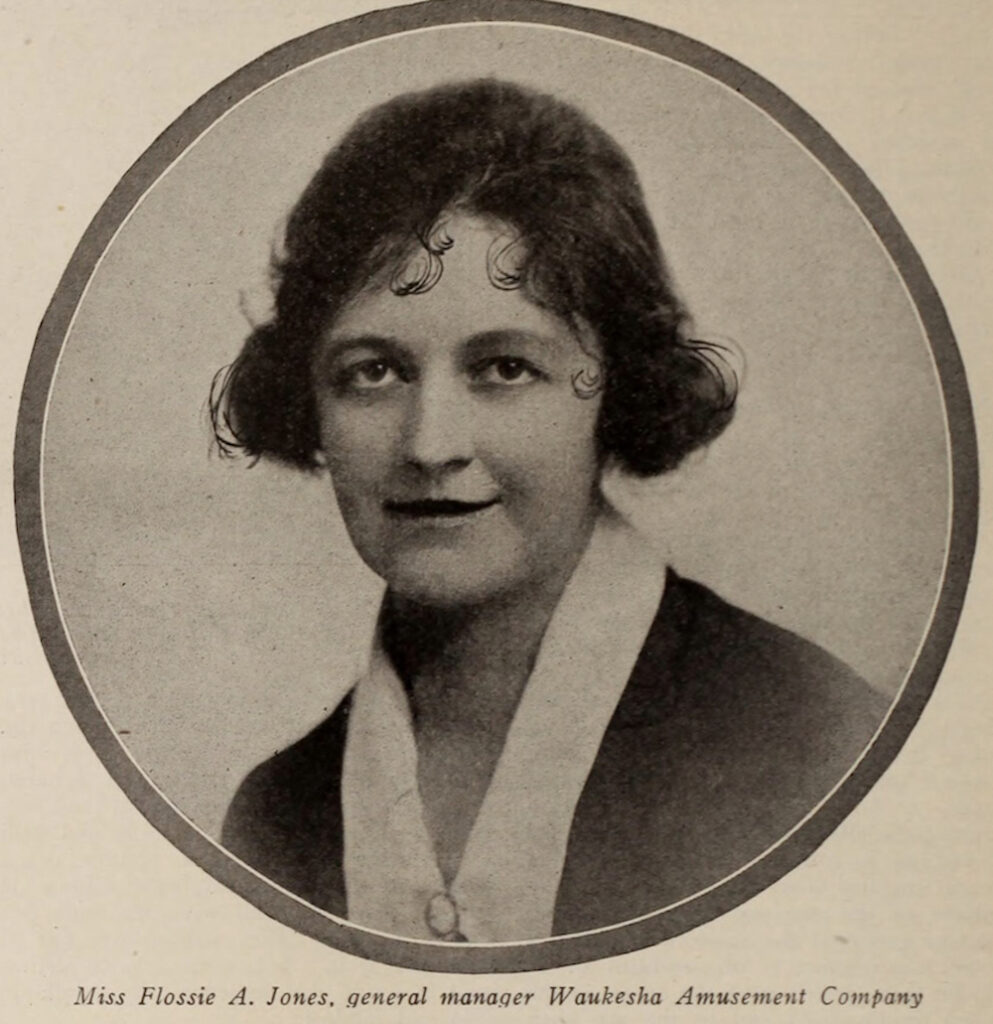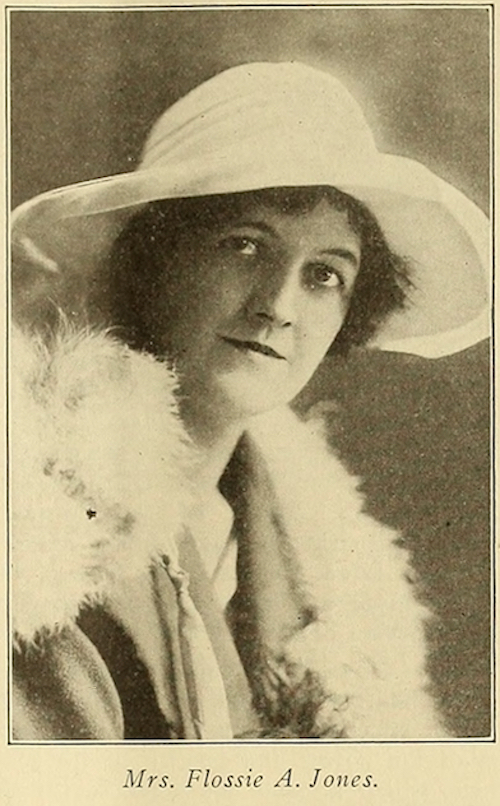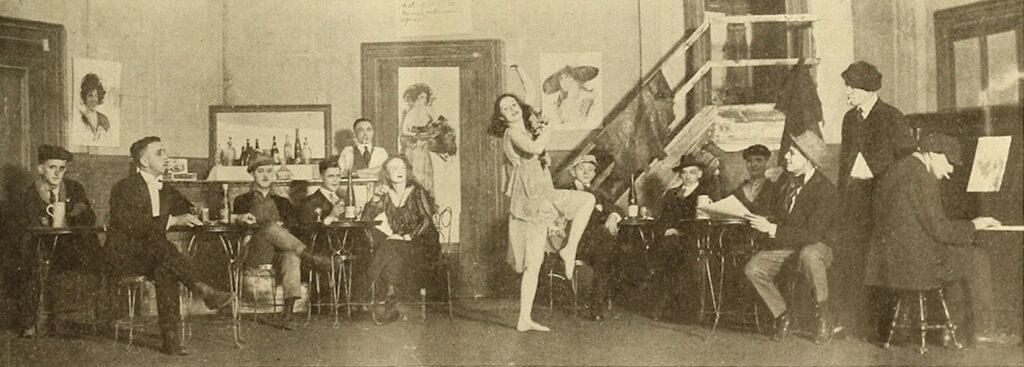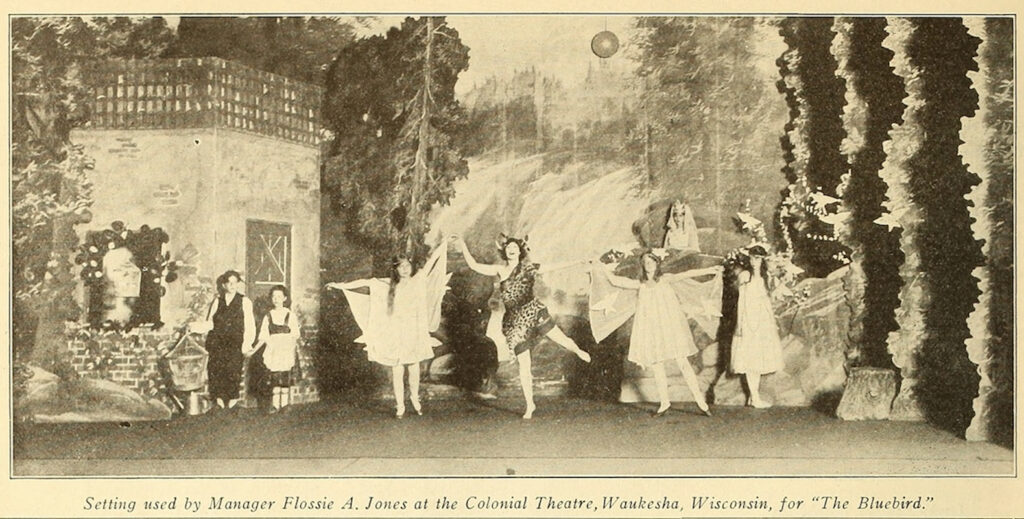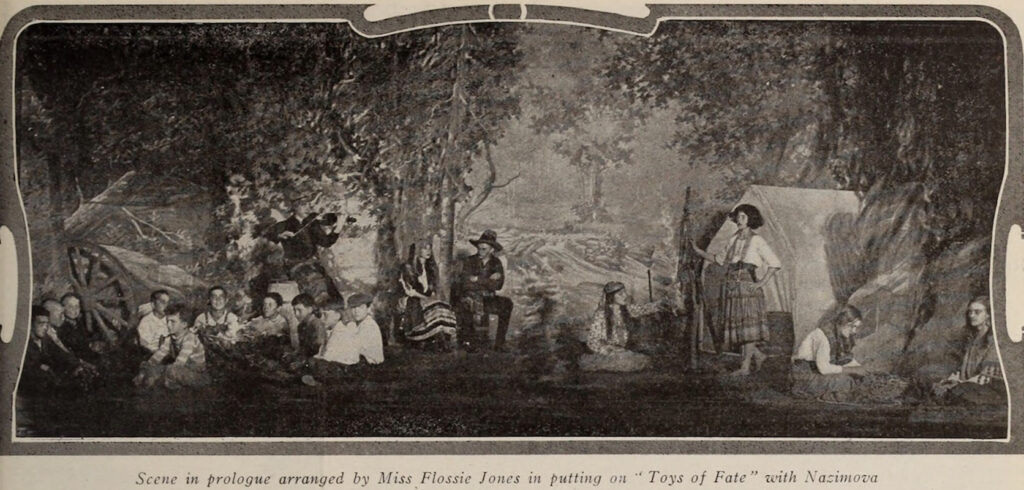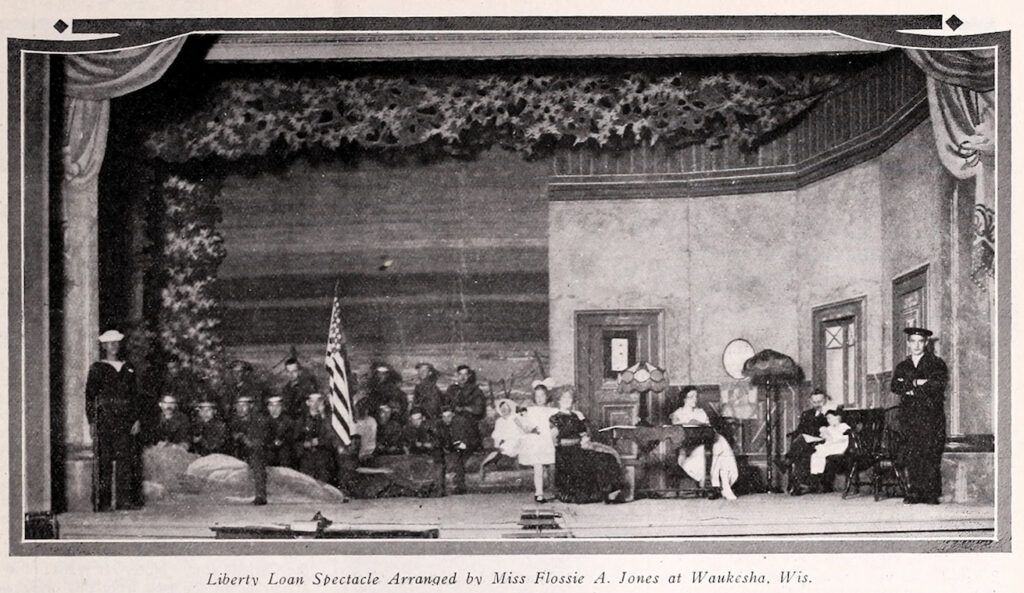In the late 1910s, the trade press heralded Flossie A. Jones as “the best-known woman manager” of movie theaters in the country (“Flossie A. Jones, of Waukesha”). Despite her position as a small-town exhibitor in Waukesha, Wisconsin (with a population of less than 10,000), this “title” made her a model for others in the industry.
Born Florence Adeline Diedrich in 1887, she was a small woman, often called a “girl” in newspaper articles. Sometime between 1910 and 1914, she married Harry Jones who, since 1900, had been active in the theater business, before becoming advertising manager and lecturer for the Unique theater. Florence first owned and managed the Park, a small theater that she sold for a profit after her lease ended. In 1914, adopting the nickname Flossie, she and Harry bought and remodeled the Colonial (formerly the much larger Silurian Casino). Within three months, unfortunately, it was partly destroyed by fire. Borrowing funds, she and Harry had it rebuilt, reportedly according to Flossie’s own designs. Furthermore, rejecting insufficient contractor offers, she bought all the materials required and supervised a score of workmen on every phase of the construction (Jones).
After the Colonial reopened in early 1916, Flossie separated from Harry. A year later, she joined several businessmen to establish the Waukesha Amusement Company, serving as vice president and general manager. The company now controlled the Colonial and two smaller theaters in town, the Unique (showing only movies) and the Auditorium (playing movies and vaudeville). “By having the different houses under a single management, the exhibitor could laugh at the salesman when he tried to boost his price [for renting a feature],” Flossie argued, “he simply couldn’t do it, that’s all” (“Running”). The flagship Colonial, with its 1,000 seats and very large stage, also could host roadshow theater productions and concerts. Jones herself acted as the Colonial’s house manager, treasurer, press agent, advertising manager, and booking agent. On Saturdays, children flocked to the theater when she sold them tickets in exchange for a potato, another vegetable, an egg, or a piece of fruit. Given her growing reputation, Flossie became a “state organizer” for the Wisconsin Theater Managers Association and a delegate representing the state at the 1917 National Film Exhibitors convention.
“I am really in competition with Milwaukee,” Flossie admitted to Motion Picture News in 1918 (“This Woman Exhibitor”). Waukesha was only sixteen miles west of Milwaukee, whose theaters could lure Jones’s patrons to the much larger city by interurban rail. She consequently had to find a way to handle expensive movies in order to maintain her clientele. Her strategy was to create a prologue or theatrical presentation that introduced the feature film, something only a few metropolitan exhibitors were staging in 1918: S.L. Rothapfel in New York, Sid Grauman in Los Angeles, S. Barret McCormick in Indianapolis, and Harold A. Franklin in Buffalo. In such a small town, Flossie recommended using local people, “‘actors’ that people know,” in order to best promote the feature (“Atmosphere Achieved”). “I work in union with the local societies,” she added, because “these societies aid me when I want some local talent for my prologues and I in turn aid them when they want benefit performances” (Moriarty).
The first prologue that the trade press praised in June 1918 was a Parisian cabaret scene that reproduced the opening scene of Revelation, in which Alla Nazimova performed an Apache dance. For this novelty, Jones arranged some tables and chairs, a player piano, and sketches on the stage walls, costumed her stagehands and a dozen high school boys in French student outfits, and hired a barefoot dancer for the Apache solo (Harris 1043). Several weeks later, Flossie created a relatively elaborate stage set for The Bluebird, which played for only two days and nights. She hired a professional dancer from out of town, three local girls who could dance (one of whom who could also sing), as well as two little children to perform in a fairyland scene, whose atmosphere matched that of the film. This prologue “helped put [her audience] into the mood of the play and proved an excellent advertising point” (“Gives ‘The Bluebird’”).
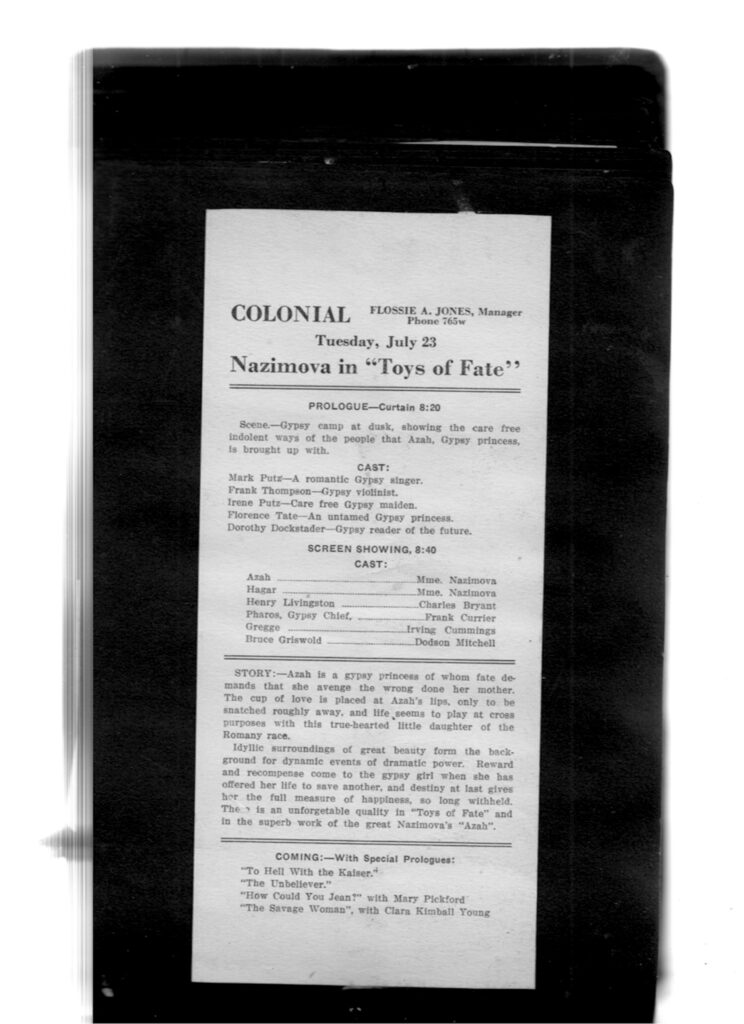
Colonial Theater program for Toys of Fate (1918). Courtesy of The Waukesha County Historical Society and Museum.
Later that summer, Jones staged a gypsy camp scene introducing Toys of Fate, also starring Nazimova. A tableau of trees and a misty distant landscape formed the background for a group of ragged street urchins sitting around a small campfire (stage right) and several basket weavers (stage left); a girl sang a gypsy love song to her lover who answered from off stage; lastly, Florence Tate (listed on the theater’s program) performed the “Gypsy Fire Dance,” the lights dimmed, and the film began (“Atmosphere Achieved”; Colonial Program). Finally, for one of the Liberty Loan campaigns later that fall, Flossie even constructed a double-sided tableau, with a darkened battlefield backing a group of soldiers about to attack over a trench (stage right) and a well-lit family interior (stage left), with a son apparently in the war. At the end, “a young lady stepped forward and sang “When the Boys Come Marching Home” (“Theatre Puts Over”). Despite its primary purpose in advancing the movie industry’s interests, the trade press promoted all three prologues and the Liberty Loan presentation, with accompanying photographs of the stage tableaux and performers—surprising evidence that even small-town theater managers could be as creative as those in much larger cities.
Miss Flossie Jones was one of only two women among the thirty Advisory Board members of Rothapfel’s Exhibitors Service Bureau and a strong advocate of efforts to support small-town exhibitors. She was becoming a well-known figure at the annual conventions of exhibitors, and, in October 1918, traveled to New York to attend the exposition of the National Association of the Motion Picture Industry held at Madison Square Garden. Shortly thereafter, she contracted the influenza virus and soon died of pneumonia at the Hotel Webster. Adding to this loss, “only a few days before her death, she was elected vice-president of the Motion Picture Exhibitors Association of Wisconsin” (“Flossie A. Jones, of Waukesha” ). On October 24, the Waukesha Freeman printed a front-page tribute to Jones:
As business manager in the theaters, wresting success from what had been near to failure, [Flossie] found outlet for her abounding energy in a labor of love. Keen, constructive business sense was supplemented by qualities of imagination and vision.
Sincerity, frank friendliness, personal charm—these characteristics endeared her alike to the humble laborer, the social leader, the man of affairs, [just plain] “folks,” and children. (“In Memory”)
Had Flossie A. Jones survived past the young age of thirty-one, how prominent might she have become within the movie industry?
The author wishes to thank John Schoenknecht and the Waukesha County Historical Society and Museum.

